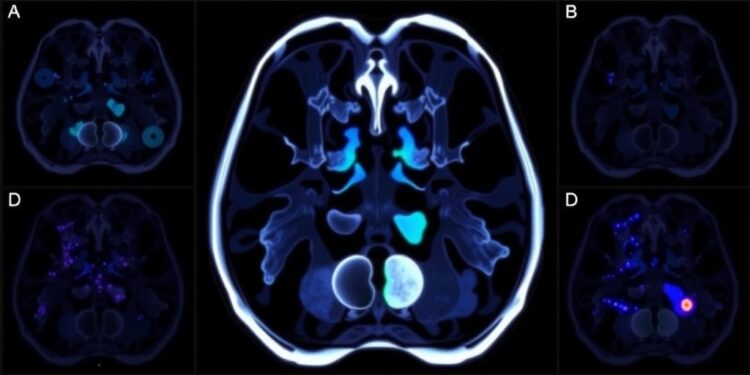
Fibroblast Activation Protein PET Imaging: A New Era in Oncology and Beyond
In recent advancements in medical imaging, the Society of Nuclear Medicine and Molecular Imaging (SNMMI) along with the European Association of Nuclear Medicine (EANM) has introduced a new procedure standard and practice guideline specifically for fibroblast activation protein (FAP) positron emission tomography (PET). This significant development aims to enhance the utility of FAP PET in clinical practice, particularly concerning the diagnosis and evaluation of various cancers. This guideline not only serves as a vital tool for healthcare providers but is also a stepping stone towards more effective treatments and patient outcomes.
FAP is a notable transmembrane protein, expressed on cancer-associated fibroblasts and normal activated fibroblasts that play crucial roles in wound healing and tissue regeneration. Due to its dual presence in both cancer and normal tissues, FAP has gained attention as a therapeutic target in cancer treatment. The emergence of FAP-targeted radioligands has further propelled interest in the application of imaging FAP for evaluating cancer and other related diseases, showcasing its potential beyond mere diagnosis.
The applications of FAP PET imaging are extensive. According to the guideline, FAP PET can significantly contribute to initial cancer staging, re-staging, and evaluating the response to treatments. Furthermore, it allows for whole-body assessments of target expression that can guide more personalized therapeutic strategies for patients. The introduction of this imaging modality may transform the landscape of cancer diagnostics and management, offering clinicians the best evidence available to optimize diagnostic efficacy.
The guideline outlines the oncologic indications for utilizing FAP PET imaging. These indications span multiple types of malignant tumors, including gastrointestinal adenocarcinoma, pancreatic ductal adenocarcinoma, esophageal cancer, head and neck malignancies, and cancers of the thyroid, lung, ovarian, and breast. Such an extensive range of cancer types underscores the versatility of FAP PET as a diagnostic tool. Additionally, the guideline addresses non-oncologic indications that involve inflammation and fibrosis processes, which are critical in a variety of chronic diseases.
Moreover, the procedure standard clarifies the qualifications and responsibilities that imaging personnel should possess. It emphasizes the need for proper training and knowledge to ensure high-quality imaging services. Standardized quality control and assurance procedures are pivotal in maintaining the integrity of FAP PET imaging, which ultimately benefits patient care and safety. Thus, it creates an expectation for healthcare institutions to adhere to these standards to achieve optimal results.
While FAP PET imaging holds promise, the authors recognize that the field is still in its infancy. Future research is imperative to deepen our understanding of the clinical role of FAP PET. Well-designed, prospective clinical trials must be established to elucidate the potential benefits of FAP imaging and support the regulatory approval of these innovative imaging agents. As knowledge surrounding FAP PET matures, clinicians can expect to leverage this imaging tool to make more informed treatment decisions.
Another significant aspect of this development is its potential impact on disease detection and treatment response assessment accuracy. Improvements in imaging technologies lead to better diagnostic outcomes, which is crucial for effective cancer treatment. With increasing evidence supporting the efficacy of FAP PET, it may pave the way for broader applications in clinical practice, leading to tailored treatment plans that could result in improved patient prognosis.
The collaboration between SNMMI and EANM in producing this guideline exemplifies the growing recognition of the importance of interdisciplinary cooperation in advancing nuclear medicine and molecular imaging. The initiation of international partnerships aims to standardize and unify these practices, enhancing the quality of patient care across different regions and healthcare systems. This collaborative effort embodies the commitment of these organizations to foster scientific innovation that translates into tangible clinical benefits.
In conclusion, the publication of the procedure standard and practice guideline for FAP PET imaging marks a pivotal moment in the field of nuclear medicine. As a groundbreaking tool for assessing various malignancies and other medical conditions, FAP PET promises to refine cancer diagnosis and monitoring. The focused commitment to establishing reliable standards will undoubtedly contribute to future advances in medical imaging, enhancing the integral role of nuclear medicine in patient care.
The complete procedure standard and practice guideline for FAP PET imaging can be accessed through the official SNMMI website, offering healthcare professionals essential insights and a roadmap for implementing this imaging technique in clinical settings. As further research unfolds, the potential of FAP PET imaging is anticipated to unlock new horizons in cancer therapy and diagnostics, benefiting patients worldwide.
Subject of Research: Fibroblast Activation Protein PET Imaging
Article Title: SNMMI Procedure Standard/EANM Practice Guideline for Fibroblast Activation Protein (FAP) PET
News Publication Date: January 24, 2025
Web References: SNMMI Website
References:
Image Credits:
Keywords: Fibroblast activation protein, PET imaging, oncology, molecular imaging, cancer therapy, imaging guidelines, radioligands, standardization, diagnostic efficacy, clinical practice.
Tags: cancer diagnosis and evaluationcancer-associated fibroblasts in oncologyclinical practice guidelines for imagingEuropean Association of Nuclear MedicineFAP PET applications in cancer stagingFAP-targeted radioligandsFibroblast Activation Protein PET imagingoncology imaging advancementspatient outcomes in cancer treatmentSociety of Nuclear Medicine and Molecular Imagingstandardized guidelines for FAP PETtherapeutic targets in cancer treatment





